
We kindly inform you that, as long as the subject affiliation of our 300.000+ articles is in progress, you might get unsufficient or no results on your third level or second level search. In this case, please broaden your search criteria.


The article is to describe an interesting phenomenon of the duplication of the literary patterns of behaviour among female protagonists created by Jane Austen. The subject of the paper is the analysis of the set books of the heroines invented by the British author in the both social and cultural context. Jane Austen’s novels can be regarded as the treasury of knowledge on the existence of the young girls at that time. The omnipresent conventions took away their right to dreams and self-fulfilment in almost every sphere of life. Lots of them found the coveted hope of improving their lives on the pages of overly aesthetic, sentimental novels. The characters from the books became inspirational among the female sex. The view of young ladies was based on their inner cultivation of the behaviour and mood which were inseparable from the girls from the popular romances. The patterns, continually given by fiction, took the place of humanistic and scientific knowledge, making the girls unaware – without the simplest information about the world. The subjects given in a wrong way by wrong teachers lowered their interest in education among youth, which also led to the popularity of sentimental, historical (especially those presenting the romance on the background of crucial events form the history of the given country) and Gothic novels. The text will concern the analysis of the attitude of the heroines created by the British author – on the basis of their set books and the position of Jane Austen in the range of literary criticism and the above-mentioned social phenomenon.
More...
The aim of the article is the consideration of the way in which Jane Austen asks in her novels about the status of reality. The subject of the interest are the narrations about “crime” understood as the events breaching the normal social experience and revealing how fragile the reality is. The significant context of the consideration is the classical detective literature. The author proves that the work of Jane Austen can be characterized by the similar reflection on societies in which the project of social reality is entangled. Referring to the conception of Luc Boltanski, she shows that, in the novels of the British writer, crime is a form of “reality testing”. Austen casts in doubt the frames of reality and reveals the conventional dimension of the social life. Her purpose, however, is not to disclose the social world – she sees the possibility of its integration.
More...
The graphic designs proposed by Polish publishers cannot be compared neither in number, nor in diversity to those presented by Margaret C. Sullivan in Jane Austen Cover to Cover: 200 Years of Classic Book Covers. Nevertheless, they are a valuable and still undiscussed source of knowledge on the Polish reception of Austen’s novels. Further information on this subject is provided in the first part of the paper by a compilation of book series in which some or all of the texts by Austen have appeared since the 1990s. The analysis of the book covers takes into consideration the relation between the design and the content of the narrative as well as the character of the artwork and its origin. The most popular were 19th century paintings (portraits, genre scenes, less frequently landscapes), film stills from the movie adaptations and floral patterns. As one of the aims of the study was to answer the question how the covers direct the reading process and place the text in the literary tradition, the remarks on the publishers’ choices were supplemented with the readers’ reviews. In the conclusion, it was suggested how the potential, new editions could be designed to stand out from the former ones.
More...
The subject of the article is the reception of Jane Austen in the sphere of e-culture – its fragment connected to websites and discussion forums concerning the writer. The phenomenon of “Austen mania” starts in Poland mainly because of the popularity of the movies based on Jane Austen prose. These sites and forums played not only a popularizing role, spreading the knowledge about the writers’ biography, work, film adaptations, or Regency, but they also grouped the society of fans who felt the need of being close to the other readers of Austen and some virtual companion in a feminine sphere created by numerous, common interpretation of the behaviour of the heroes of her prose, and also fans’ creativity in the area of gadgets, Regency costumes and literary tourism. The other form of activity is fan fiction, slightly represented on the forums and sites, especially in the comparison to fan fiction around the work of Austen in the English-speaking circle. They are most frequently the translations from The Republic of Pemberley, not prepared, unfinished, fragmentated, or personal attempts of a romance kind, in a style of Harlequin literature and a sentimental tone.
More...
The article is devoted to the works of Emma Tennant, an English writer, the author of, inter alia, the continuation of Sense and Sensibility, Emma, as well as Pride and Prejudice. A characteristic feature of Tennant’s writing was the ability to give new meanings to the texts and myths of the popular culture – so she did with the story of Elinor and Marianne, or Sylvia Plath, to whom she devoted one of her better texts. The article, based on the example of Emma Tennant’s writing, focuses on the issues of the strategy of creating literature as rewriting and functioning of feminist ideas in the modern literature.
More...
The article analyses an ITV series Lost in Austen (2008), directed by Dan Zeff, as an example of postmodern play with Pride and Prejudice. Moving the contemporary heroine to the imaginary, textual sphere, the movie compares the reality of the 19th and the 21st century, emphasizing the visibly different positions of women. It not only “rewrites” the course of events, but also makes the tensions (which were previously silenced by the romance convention) more dynamic. Oscillating between the parody and nostalgia, Lost in Austen both continues and enriches Pride and Prejudice. Playful engagement with the original novel is the principal theme and motif of the series, but also the subject of its parodistic criticism. Lost in Austen engages both with the novel and with its 20th century reception. Moreover, by creative reinterpretation of the writer’s text, it shows the changing paradigms of the 20th century criticism and the cultural and literary theory. Highlighting the aspects of the novel important for the contemporary era, it initiates an interesting dialogue with the rich intertextual tapestry that contemporary popular culture weaved around Jane Austen.
More...
Contemporary (Re)interpretation of Jane Austen’s Novels – about Looking for Freedom is a comparative study of the works of the author of Sense and Sensibility and the British series Taboo. As the main aim of paper the author took the search for analogies in these, far and totally different, as it may seems, texts of culture. Naming after Carrie Vaughn the works of Miss Austen as the “universe mirrors”, the author drew the attention to the modern “reflections” of Austen’s characters (anti-heroes, look-alikes) and today’s reinterpretation of the 19th century. For the palimpsest reading of the Austen’s novel she used the tools of the feminist criticism and the postcolonial theory. It allowed her to observe the femininemasculine relations, the relations based on a master-servant pattern, and, at the end, to analyse the political, social, cultural image of the coloniser and the colonised, which has been made by the colonial regime at that time. The author of the article put these two discourses together in order to prove that the rights of the 19th century wife were limited to those of a slave from the Dark Continent.
More...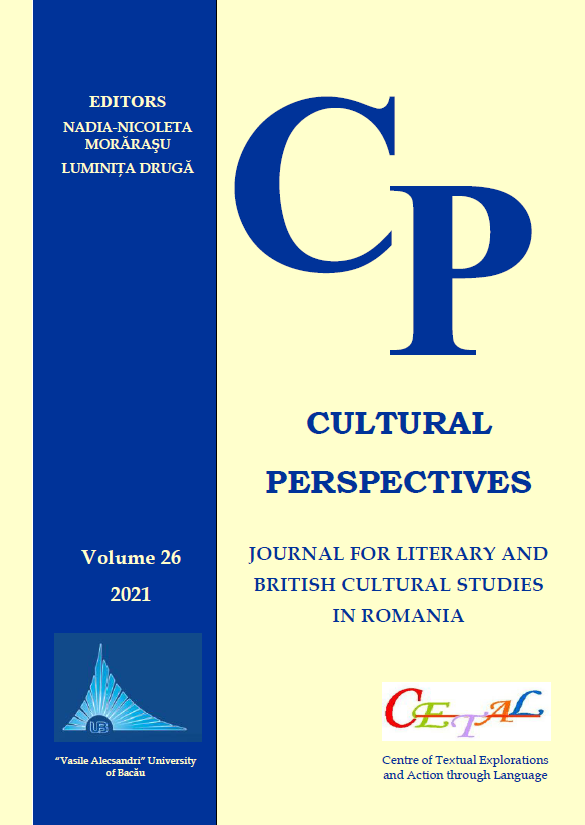
Edgar Allan Poe neither cherished nor appreciated the fundamental standing points of American Transcendentalism, never missing the opportunity to express his “disagreement” with the ideas discussed by some leading figures of this religious, literary and philosophical movement in antebellum America. He criticized their “obscurity for the sake of obscurity“, their being prone to vagueness and imprecission as well as the way they perceived the Universe, the Oneness, the Soul of the World and the Soul of the Individual. The aim of this paper is to highlight Poe’s perspective on Transcendentalism, both on the literary scene of the day and in some of his short stories.
More...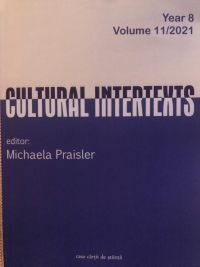
Owing largely to the political situation in the United States, which seems to head, dangerously so, towards a dystopian Gilead, Margaret Atwood’s The Handmaid’s Tale gets, at the end of the 2010s, to be re-told by many voices: that of her original creator – by her writing a sequel, The Testaments (2019) –, but also those assumed in successful transmedial adaptations – the homonymous graphic novel authored by Renee Nault (2019) and the TV series that has taken Offred beyond her final step “into the darkness within, or else the light” (Atwood 2010: 307) into the second, third and fourth seasons. Aside from Season 1, which follows closely the convoluted structure of Offred’s monological testimony, the TV series seems, at a glance, less a multimodal adaptation and more an appropriation of a late 20th-century novel that has become a political and cultural phenomenon. Part of a project concerned with the many re-tellings of The Handmaid’s Tale, this paper aims to analyse the TV series’ fabric beyond the plot departures from its hypotext, as well as the latter’s ‘translations’, with a view to proving its unquestionable indebtedness to the ‘mistressmind’ of contemporary speculative fiction.
More...
How to Be Both by Ali Smith, which centres around the concept of art and reality to a great extent, is an experimental novel that invites the reader to think through dualities, including life and death, artwork and human; and, significantly, from the perspectives of eyes and camera. Divided into two sections, the novel includes two stories which are decade-apart. One of them focuses on the life of the 15th-century artist Francesco del Cossa, and the other is reflected through the point of view of George, a young girl from the contemporary period, dealing with the loss of her mother, as she recalls some precious moments she shared with her. The different plots merge when George and her mother go to see the paintings of Cossa. By foregrounding the two kinds of perception, Smith’s novel signifies the art critic John Berger’s theory of perspective, indicated in his BBC series-based book Ways of Seeing. According to Berger’s cultural theory, the human eye, like a painting on the wall, can only be in one place at a time. Yet, the camera takes its visible world with it as it moves, and through the camera we can see things which are not in front of us; it is freed from the boundaries of time and space. The aim of this paper is to demonstrate the significance of gaze while interpreting relative reality in Smith’s novel by employing Berger’s cultural and artistic theory.
More...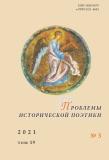
A. P. Chekhov’s short story The Fidget (1892) is an abridged hypertext of G. Flaubert’s novel Madame Bovary (1856). The article undertakes a detailed comparison of the characters who occupy a similar place in the narrative and figurative system of these two works: Osip Dymov and Charles Bovary. Both of them are doctors, but Chekhov’s character seems to realize the untapped potential that was laid down in the character penned by Flaubert. He is no longer a failed doctor, but a talented one, with all the qualities required to become an excellent medical scientist. Thus, Chekhov does not merely stand up for the medical community, which he is no stranger to. Thanks to this, the story of the Russian writer transforms into a polemical interpretation of the classic French novel. In Flaubert’s Emma’s imaginary search for the meaning of life, which explains her two adulteries in Madame Bovary, Chekhov seems rather inclined to see the selfishness and lack of responsibility that destroy her family and lead to her own death. It is not by chance that Dymov, rather than Olga Ivanovna dies as a result of her own similar behavior in Chekhov’s short story. At the same time, Chekhov’s text is also a polemical interpretation of Tolstoy’s Anna Karenina (1873–1877), which was created as an explicit hypertext of Flaubert’s novel. In the short story, Chekhov’s critical reinterpretation of these two works is clearly based on a kind of “folk” morality of the Ant from the canonical Krylov fable The Dragonfly and the Ant (1808), which is clearly referenced in the title and text of the story. The intertextual structure of Chekhov’s story is examined in the article primarily as a system of its pretexts, some of which relate to it in unison, and others-dissonantly. At the same time, the former are the object of polemical interpretation, while the latter are the subject of stylization and value orientation.
More...
The article explores the poetics of Yu. O. Dombrovsky’s novel The Monkey Comes for its Skull (1943–1959) through the prism of medical discourse, which occupies a prominent place in the structure of the work. Every appeal of the novel’s characters to medical discourse indicates a situation of communicative shift, the breakdown of connections between words and things. Thus, “medicalization” becomes one of the symptoms of the new paradoxical reality of occupied and post-war Europe. Contrary to the Enlightenment paradigm, a medical view of the motifs of human actions does not reveal the truth, but on the contrary, leads away from it. For Dombrovsky’s work, ancient Stoic philosophy with its understanding of wisdom as therapy of the soul, the completeness of self-control and absolute spiritual freedom is also important. Sooner or later, each of the characters has to remain one-on-one with his own conscience and moral dilemmas, while auxiliary discursive practices cease to be an effective means of social camouflage. The ideological composition of the work corresponds to a specific narrative technique and motif structure, which is characterized by the use of genre techniques of detective and spy novels. In general, the novel The Monkey Comes for Its Skull offers the reader an alternative to “new prose,” with its demonstrative rejection of fictionality, its accent on documentary, factography. Dombrovsky prefers to overcome the “literariness” of literature from within the prevailing genre and aesthetic conventions, synthesizing and transforming various types of discourses, including medical ones.
More...
The author analyses the translation strategies used by the translators of S. Lem’s The Futurological Congress to Bulgarian, Czech and Russian languages. The significant differences in the approach is noted — Helena Stachová, who translated to Czech language, tries to preserve in all the circumstances the author’s idea of challenging the reader with ethymological puzzles — and succeeds in that task very well. The Russian translator, Konstantin Dushenko and the Bulgarian translator, Svetlana Petrova, choose different approach, trying to maximalize understandability for the target language reader. With this approach quite a lot of intellectual challenges disappear from the text. The other discovered fact is, that with very high probability Svetlana Petrova must have been influenced by the Russian translation.
More...
The article deals with the ways of transferring words and phrases naming things, phenomena, and objects typical for life, daily routine and culture of the Muscovites during the first decades of Soviet power, used for translation of the novel “The Master and Margarita” into South Slavic (Bulgarian, Serbian, Croatian, Slovenian) languages. The complexity of the novel’s artistic structure, the combination of several cultural, historical and religious traditions, stylistic and linguistic layers, possess a very difficult task for translators. One of the necessary conditions for its solution is the presence in the translated edition a reference device (reference comments) explaining difficult passages.
More...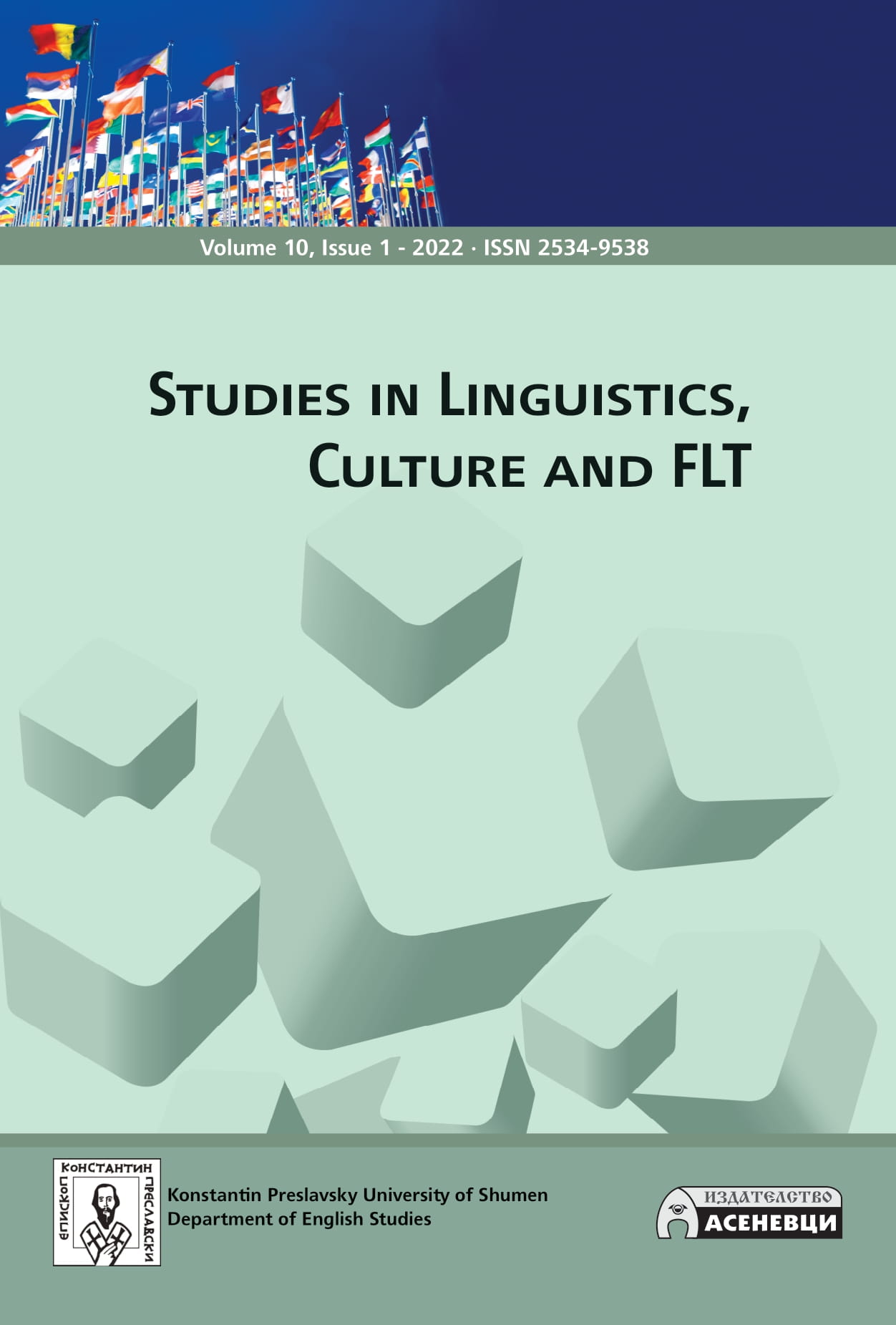
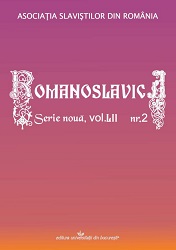
The thesis of the paper is that the Croatian bourgeois culture in the 19th century originates as the culture of normalization that strives to restrain, by its mechanisms of discipline such as psychiatry, the different forms of social abnormalities. At the same time, those mechanisms rely on the theory of degeneration that becomes an important topic of the Croatian literature of that time. First of all, the paper defines the range of connection between the theory of degeneration and Croatian modern literature. After that, the paper shows to what extent the former psychiatry and medicine themselves rely on the theory of degeneration. Finally, with the analysis of the novel Tito Dorčić, the paper confirms the complexity of the connections between the Croatian culture of the normalization in the 19th century and the fin de siècle literature that reflects and problematizes important social and cultural contradictions.
More...
L’article traite tout d’abord le terme ‘roman psychologique moderne’ dans ses diverses utilisations. Les accents mis différemment par la critique dans chaque littérature présentée ici ne mènent pas cependant jusqu'à la méfiance quand à l’essence du terme. Tout au contraire, la connaissance des distinctions permet à être trouvés des exemples similaires pris dans les trois littératures européennes de l’entre-deux guerres, notamment la littérature roumaine, la littérature bulgare et la littérature française. Un nouveau moment pour le roman psychologique de cette période est souligné, à savoir, l’anxiété éveillée (par la psychanalyse) devant l'inconscient et son utilisation comme élément constructive de l’intrigue romanesque. Les exemples sont tirés des romans de Camil Petrescu, Boris Chivatchev et Marcel Proust.
More...
This text examines George Perec's novel The Man Who Sleeps and its adaptation through a young man's existential crisis in search of the meaning of his existence. The disintegrated time and space introduce the reader to the labyrinth of wandering consciousness through the “rhetorical places”, the delight of emptiness, on the border between dream and reality. The work is close to the experiment of the literary movement “New Novel”, approaching in the film the “camera-pen” embodied in the New Wave of French cinema.
More...
The article aims to answer a few questions related to the autobiographical and literary basis of Vazov’s short story Emma, its hidden correlation and opposition to Flaubert’s Emma from the novel Madame Bovary, as well as to trace some “bovarystic” plots in the prose of the antibovaryst Vazov.
More...